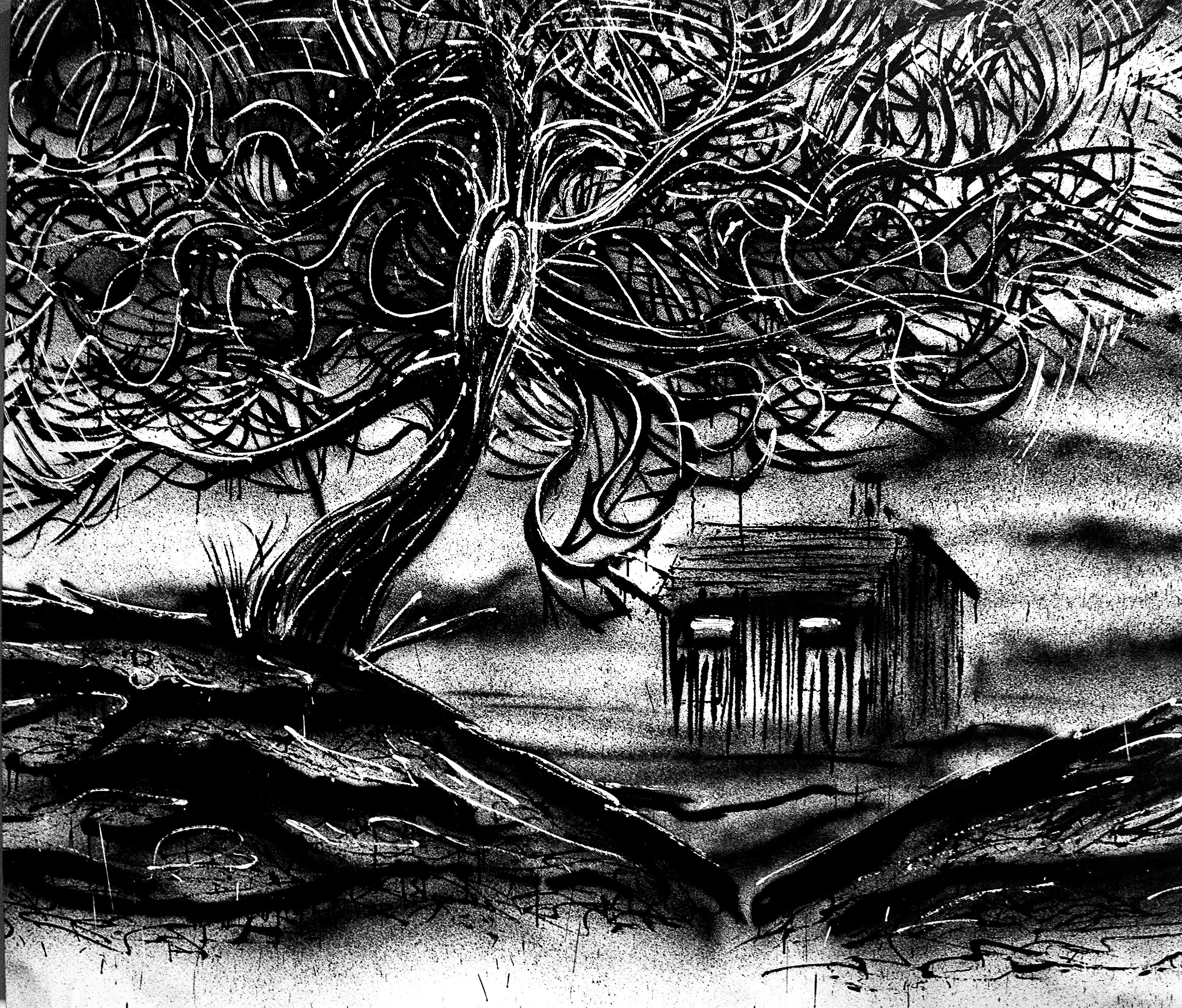2015 l Degenerate

When the artist began studying art, they chose “madness in art” as their first theme. However, they were soon asked to abandon the topic due to its broadness and lack of immediate reward. Just a week before their exams, someone stole their paintings, which finally convinced them to bury the idea. Now, over thirty, the artist aims to reconnect with their adolescent passions. “Degenerate” is therefore a return to their roots and a logical continuation of their previous exhibition. While “Blackwhite” explored portraits, “Degenerate” highlights landscapes. As a graffiti artist, the artist sees classic themes as fertile ground for experimentation. These themes reveal the essence of spray paint and allow the artist to compare two worlds to create a third one. “DEGENerate” examines social norms, presenting landscapes of houses and dark winter trees that evoke their own form of intoxicated poetry. Based on sketches, these landscapes push subjectivity towards Expressionism. The style references the American post-war art movement that projects emotions onto simple landscapes, creating an exaggerated nature verging on abstraction—evoking Edward Hopper’s loneliness, Charles Burchfield’s flowers, and Van Gogh’s sun.The series includes symbolic houses representing mental spaces, like Norman Bates’ home (Psycho, Alfred Hitchcock), the Stanley Hotel (The Shining, Stanley Kubrick), and the Paper Street house (Fight Club, David Fincher). These virtually abandoned shelters are solitary and nearly alive, representing the human mind close to its wild instincts, living on the fringes of a stigmatizing society.American cinema, particularly horror and film noir, has deep roots in the expressionist cinema of early Hollywood. Many renowned directors, such as Friedrich Murnau and Fritz Lang, fled World War II in Europe and aligned themselves with the German expressionist film branch. Expressionist painters were exposed by Hitler himself in 1937 in an exhibition titled “Entartete Kunst” (Degenerate Art). This exhibition aimed to scientifically demonstrate that modern art, including expressionism, was a result of human degeneration due to racial diversity and perversion by “Jews and Blacks.” In parallel, they displayed artworks deemed pure heroic classic art, defining the status quo of orthodox versus unorthodox art. Ironically, at the exhibition’s end, Hitler’s right-hand man, Goebbels, and others included these modern pieces in their personal collections.
On May 7, 2014, the artist’s “Blackwhite” exhibition opened. Simultaneously, in Salzburg, the remaining Degenerate Art collection was found in the possession of Cornelius Gurlitt, the son of Hitler’s artistic advisor, Hildebrand Gurlitt. This discovery underscores a historical continuum that leads to modern forms of confinement and stigmatization, particularly through the Internet. By erasing privacy, society accentuates the concept of normality and passive monitoring. The truth is, it is no longer about actively monitoring people but making them believe they are being watched. Concerned with others’ opinions and being classified as normal, individuals ultimately censor themselves. A mind close at hand can no longer be a refuge.
**I Degenerate I**
120 x 160 cm — 2014
Black spray on Canvas — Série One Step
Thibaud Tchertchian
**I Degenerate I**
120 x 160 cm — 2014
Black spray on Canvas — Série One Step
Thibaud Tchertchian
**I Degenerate I**
120 x 160 cm — 2014
Black spray on Canvas — Série One Step
Thibaud Tchertchian
**I Degenerate I**
120 x 160 cm — 2014
Black spray on Canvas — Série One Step
Thibaud Tchertchian
**I Degenerate I**
120 x 160 cm — 2014
Black spray on Canvas — Série One Step
Thibaud Tchertchian
**I Degenerate I**
120 x 160 cm — 2014
Black spray on Canvas — Série One Step
Thibaud Tchertchian
**I Degenerate I**
120 x 160 cm — 2014
Black spray on Canvas — Série One Step
Thibaud Tchertchian
**I Degenerate I**
120 x 160 cm — 2014
Black spray on Canvas — Série One Step
Thibaud Tchertchian
**I Degenerate I**
120 x 160 cm — 2014
Black spray on Canvas — Série One Step
Thibaud Tchertchian








